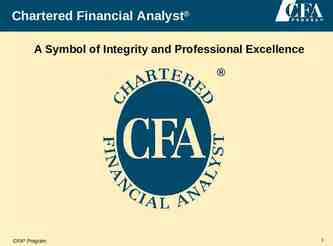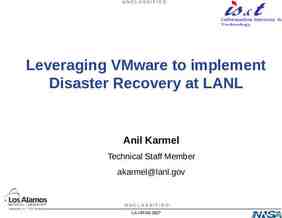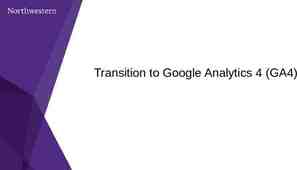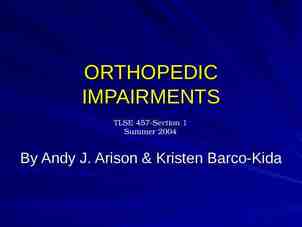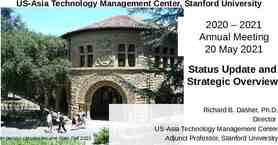Autopilot for New Computers Brian Arkills, barkills@uw Kim
33 Slides1.49 MB

Autopilot for New Computers Brian Arkills, [email protected] Kim Frye, [email protected]

Agenda Introductions Project Summary / Benefits / Scope / Deliverables Summary of our Solution Problems/Solutions Technology approach Access control Support Device setup Device lifecycle Azure AD AD / Delegated OU Autopilot workflows User experience Questions

Project Summary (What) UW needs a safe and consistent process to provision endpoints, especially during the Covid-19 Crisis Response. The current process requires on-campus presence, and complex imaging to be performed by end users with adhoc calls to IT. Intune provides cloud-based device management including quick, self-service Windows imaging via Autopilot. Autopilot allows new computers shipped from a vendor to be setup with a UW image from the first boot without requiring a physical presence from IT staff at the UW. This results in a domain-joined, UW configured computer. Because the entire solution is cloudbased, there is no need for the device to be physically on the UW network at any point in time to get setup or configured.

Goals, Objectives & Benefits (Why) Establish a seamless process of provisioning useful UW appropriate Windows computers to end users. Reduce or eliminate IT physical intervention with each device prior to provisioning to the end user. Implementing this project will address requirements to decrease or eliminate campus presence during the Covid-19 Stay-At-Home mandate while meeting the computing needs of staff.

Scope In Scope Enable cloud-based Windows setup for UW employees, such that the device does not need to be physically present on the UW network. Minimally provide cloud-based management capabilities, limited to what Autopilot requires or would result in significant future problems As needed to provide Autopilot, minimally provide limited delegation to other IT units at UW Design Intune infrastructure to allow for additional capabilities to be realized in the future The project beneficiary community will ultimately be all UW employees. Out of Scope Custom Images Intune Based Workstation Management Direct join to Delegated Organizational Units (OUs)

Key Project Deliverables Deliver minimal Intune and Autopilot design, limited by the scope Enable hybrid device join Work with common hardware vendors to setup Autopilot enrollment into our Azure AD tenant Amend Microsoft Infrastructure (MI) and MWS team processes to account for cloud-based device provisioning, lifecycle, and management Release new capability to customers, including; Establish Autopilot provisioning process for customers Publish customer documentation

Problems to Solve 1. 2. 3. 4. 5. 6. 7. Technology approach – what tools and approach do we take? Access control questions - Which users can do what? Support problems – Who supports what? Device setup questions – what's on the "image"? Device lifecycle - When does it go away? Renames? Azure AD considerations – What needs to change in AAD? AD Delegated OU considerations – What needs to change in AD?

Look ahead – our solution A single Autopilot provisioning package for all employees which: Performs a hybrid join over VPN (AAD join and NETID AD join) See https://docs.microsoft.com/en-us/mem/autopilot/user-driven#user-driven-mode-for-hybrid-azure-active-director y-join-with-vpn-support VPN based sign in after the initial reboot to complete the AD join Basic applications installed Office ProPlus Husky OnNet Windows Defender Windows Update for Business Computer is joined to Autopilot OU with a basic GPO applied OU administrators can move computers from the Autopilot OU to their delegated OUs

Autopilot Hybrid Join

1. Technology approach problems What user scenarios do we support? Should we use Automatic MDM enrollment instead of Autopilot? What type of join? Do we allow Intune enrollment for other device platforms? How do we approach Autopilot device registration? Should Intune be used to manage devices *after* Autopilot? If yes, how should we design RBAC for it? What Intune capabilities need strong expected practices to ensure a good outcome for all?

Device Acquisition Scenarios New Device Existing device Unit IT Purchased from an Autopilot enrolled vendor End-user’s universityowned device needs to be restored to a known working state. End-user receives a new university-owned device that needs to be configured to the specifications of their unit IT. Device needs to be reset for reassignment to a new user. Unit IT wants devices configured with particular settings and applications when/after they are built or rebuilt Hardware information collected manually and uploaded by UWIT staff

Vendors UW Autopilot Vendors: CDWG, Lenovo, MS Store, or Dell Vendors are either resellers (need Azure partner permissions) or OEMs (need MS Store for Business perms) Microsoft documentation about just what perms you are giving away is poor and they know it Each vendor treats Autopilot differently Self-service vs sales rep Free vs extra cost Enrollment only vs package of services (assumption: you want a package of services) Other oddities pre-authorized list of scope tags VERY small number of possible allowed scope tags

Intune options – high level Autopilot wins b/c MDM enrollment requires continued Intune management b/c it can't do hybrid join Note: MDM enrollment skips need to register devices Hybrid join (aka AAD Intune AD join) - resulting in familiar AD user sign in Delegated Intune requires RBAC & scope tags Union of all permissions across scopes horror for university like ours Could design complex scope tag approach Would allow for delegated profiles and users to "pick" which they get More work for everyone, and it will scare people away Avoid for now, but next project Other platforms? Looks enticing, but Windows is primary need now. So future enhancement

2. Access control problems Many Autopilot profiles that are delegated, a few centrally maintained, or one? Who should be allowed to use Autopilot? Who should be allowed to AAD device join? VPN access? How do we ensure all users enabled for Autopilot have an Intune license? Note: AD delegation topics covered on later slide

Access control decisions Single Autopilot profile for all employees We'll expand later, but need momentum and quick win 4 access control gates required to successfully do Hybrid join Autopilot via VPN: AAD device join, Intune registration, Intune license assigned, and VPN access Employees and students are licensed for Autopilot at UW Marketing targets employees Students kinda can, but not advertised; we block "personal" devices in Intune device enrollment to mitigate Use AAD group-based licensing group for 3 of 4 gates; employees get VPN access Unfortunate side-effect: users can now do AAD device join only too Not a good idea: https://itconnect.uw.edu/wares/msinf/aad/device/

3. Support problems How do we explain all the terminology to people? Who supports Intune and Autopilot? Who is responsible after Autopilot is done? What support is available for computers that don’t move to a delegated OU and IT unit?

Support solutions: docs Cloud device glossary: https://itconnect.uw.edu/wares/msinf/aad/device/glossary/ Autopilot device enrollment: https://itconnect.uw.edu/wares/msinf/aad/device/intune/autopilot/enroll/ Autopilot step-by-step: https://itconnect.uw.edu/wares/msinf/aad/device/intune/autopilot/setup/ Autopilot reset: https://itconnect.uw.edu/wares/msinf/aad/device/intune/autopilot/reset/ Autopilot troubleshooting: https://itconnect.uw.edu/wares/msinf/aad/device/intune/autopilot/troubleshooting/ After Autopilot: https://itconnect.uw.edu/wares/msinf/aad/device/intune/autopilot/after/

Support solutions Even within IT, we needed glossary for consistent vocab & understanding Are MDM enrollment, device enrollment, & Intune enrollment the same thing? what's the difference b/w co-management, co-existence, client attach, and cloud attach? what's the difference b/w Intune delete, fresh start, retire, wipe? Central IT provide central Intune & Autopilot support, using the same team which provides our cost-recovery Managed Workstation service .2 FTE centrally funded for Autopilot. Delegated Intune will need other funding solution. Support options after Autopilot UW-IT Managed Workstation support Local IT via delegated OU Unmanaged Unmanaged minimal central support limited to "locked out" interventions not being able to sign in, needing the bitlocker recovery key, needing the built-in local administrator password, other scenarios we haven’t anticipated Biggest support issue: OS entry point: requires Win10 1903 Pro or Enterprise with Dec 2019 cumulative update NOTE: CDW will not guarantee the build of the OS unless they image the device (added cost), or the device is configured to order (CTO) (also added cost).

4. Device setup problems What configuration should be in the Autopilot profile? What software? Local admin managed? AV? Microsoft updates? Bitlocker? Which configuration should be in another mechanism (like a group policy object)? Computer naming?

Device Configuration Choices Manageability beyond provisioning: move each device to a delegated OU (more on later slide) Intune profile: Windows edition upgrade & S mode removal Automatic device naming with an Intune specific prefix (INT) AD join goes to a new "Autopilot" OU which is generally only managed by central IT Software installs: Custom F5 (f5.com) client, aka Husky OnNet Managed Windows VPN client (req'd for Autopilot join) Microsoft 365 Apps (Office ProPlus) Configured in both Intune & GPO: Bitlocker enabled Microsoft Update for Business (current branch) settings LAPS Defender We have Sophos, but didn't want to manage AV for "unmanaged" Defender is better GPO-based config used for what IT units might want to change: Various security settings, including Windows Firewall Next project: Managed Workstation replaces existing GPO & SCCM with Intune & set stage for others to adopt Intune

5. Device lifecycle problems What are the device lifecycle and naming needs? When is a device considered abandoned and removed automatically? How do we collect device lifecycle data from AAD, Intune, and AD? How do we remove a device from AAD, Intune, and AD? Can someone rename a device after setup? How? Who? Can we recover a device object that has been deleted? How do we deal with mistakes by Microsoft's enrollment policy?

Device lifecycle solutions Name changes No support for Intune driven name changes. This has been broken for 2 years Can be initiated locally only when the device has line of sight to AD Must be local admin and OU admin Don't flow to AAD if pre-Win10 1903 – luckily that's a minimum expectation for us Device lifecycle ridiculous. This makes data reconciliation across AAD, Intune, and AD challenging AAD device object design is slightly We punted on a lifecycle solution. We know that can't last. We need to see the data across the services to know how much leeway we need to give for considering a device abandoned. Device object recovery We haven't yet been asked to recover a deleted object (in AD, Intune or AAD). AD recovery should work, but unclear on the others. Enrollment policy failure Failed recently allowing personal devices to enroll. 250 student devices enrolled during MS failure that we need to remove. When we remove them, a Windows notification is raised. Need to alert users beforehand. Thanks, Microsoft. Good news: they alerted us about their failure. We would likely still be wondering how these devices got in

6. Azure AD considerations What AAD tenant device settings are needed? Enterprise State Roaming? Local admins added to all AAD device joins? Do we allow other hybrid join devices (outside autopilot as a point of entry)? Do we have any policies, practices, or support for Azure AD only joined devices? How do we approach Azure AD device groups and device tagging?

AAD choices Enabled Enterprise State Roaming: https://itconnect.uw.edu/wares/msinf/aad/device/esr/ tenant-wide on/off setting Allows some user state to follow users across AAD joined devices Enabled to smooth transition across devices AAD device local admin: too dangerous to use at our scale AAD device join/registration: covered earlier, see https://itconnect.uw.edu/wares/msinf/aad/device/ Bitlocker recovery key may be saved to AAD (timing) User performing Autopilot has access via https://aka.ms/aadrecoverykey Otherwise, global admin or device admin can get access AAD groups of devices – Poor MS options and guidance. Sadness. Dynamic groups offer only a few mostly lame attributes. We are using one to assign Intune profile to all Autopilot enrolled devices. The big problem here is the interesting device data is in Intune/MEM, but AAD device attributes are all you can use. https://docs.microsoft.com/en-us/mem/intune/enrollment/device-group-mapping: use categories bad idea If you enable hybrid join, AD groups of devices have the valid respective AAD device. So one bright spot. To move beyond hybrid, we will likely have to open up delegated AAD group management of devices. How to do that is unclear.

7. AD Delegated OU considerations What changes do delegated OU customers need to make to incorporate Autopilot? How do computers get into the right delegated OU? What about opening up hybrid join? Is this required? Should we do it?

AD choices OU admins are advised they can move any Autopilot computer into their OU, but should only claim computers they believe are theirs We've got minimum AD perms for moving a computer object if anyone needs this Once a computer is moved, a bunch of GPO settings may be overridden by the OU's GPO settings. This is a feature of our design. Bitlocker key may be saved to AD (depends on timing) LAPS data is saved to AD https://itconnect.uw.edu/wares/msinf/ous/guide/autopilot/

Hybrid Join Enabling hybrid join *not* required for Autopilot Hybrid Join. Good idea for consistency. Start here: https://docs.microsoft.com/en-us/windows/security/identity-protection/hello-for-business/hello-how-it-works-device-registration#hybrid-azure-a d-joined-in-federated-environments Picture and flow diagram intended for WUfB. *ONLY* place where the hybrid join process is documented in enough detail to understand it. MS docs should be simplified, clearer, and unified 4 requirements: Need WS-Trust protocol support. If federated, need endpoint enabled with correct claims transform rules. If you are federated with Shibboleth, you are OUT OF LUCK. Need something to trigger the AD joined computer to initiate AAD registration AD Service Connection Point -- All eligible computer in domain are triggered - You can do this via AADC options or manually in AD Config partition Registry Key Single computer is triggered – You can do this via GPO, so a set of computers. Note: MS calls this "Controlled Validation" in its attempt to confuse you. Need the Windows scheduled task to kick off Need AADC sync to correlate AD and AAD objects via unique identifiers (not really required) Gotchas: Note that Windows Server is among eligible computers Only problem we've seen are with a WS RDS with Network Level AuthN policy and Mac clients. Unjoining and disabling hybrid on a per-computer basis is documented by Microsoft, but incorrect. See https://itconnect.uw.edu/wares/msinf/ous/guide/hybrid-join/ for good advice

Autopilot workflow Computer is enrolled in Intune User turns on computer User receives the Autopilot-enabled computer Intune sends ODJ blob to computer Computer automatically connects to the Autopilot service downloads the Autopilot profile Intune AD connector sends ODJ blog to Intune Computer applies ODJ blob Computer Restarts User logs in with UW Netid Intune deploys policy and applications to computer User goes through the Autopilot OOBE. User signs in using UW Netid Intune AD connector communicates with AD creates ODJ blob User will be prompted to login using Netid credentials. Computer gets group policy from AD. Intune deploys offline domain join configuration policy. Computer asks Intune for ODJ blob. Intune contacts Intune AD Connector (installed on premise) for ODJ blob User login is successful device is read to use

User Experience

VPN sign-in to Windows Experience

Acknowledgements Heavy lifting: James Morris, Lead Engineer & Design Jake Nastasiak, Software Engineer - did a lot of the Intune work Other members of project team: Gayle Tucker, Project Manager Elizabeth Sharpe, Communications Specialist Ryan Brown, Software Engineer Tony Zauhar, Tier 2 Chris Fairfield, Tier 2 lead Dawn Cullerton, Tier 2 Rennie Grossman, Tier 2 Tacia Beaumont, Tier 2

Adoption rates Autopilot domain joins per day 10 9 8 7 6 5 4 3 2 1 0 2 0 20 2 0 20 2 0 2 0 2 0 2 0 2 0 2 0 2 0 2 0 2 0 2 0 2 0 2 0 2 0 2 0 2 0 2 0 2 0 2 0 2 0 2 0 2 0 2 0 n- un- un- ul- u l- ul- ul- ul- ul- ug- ug- ug- ug- ug- ug- ep- ep- ep- ep- ep - ep- ct- ct- ct- ct- ctu -J -J -J 3-J 8-J 3-J 8-J 3-J 8-J -A -A -A -A -A -A -S -S -S -S -S -S 1-O 6-O 1-O 6-O 1-O 1 1 2 2 2 7 12 1 7 22 2 7 1 6 11 1 6 21 26 1 1 2 1 8 23 2 8 Total computers joined using Autopilot 160 140 120 100 80 60 40 20 0 2 0 20 20 20 2 0 2 0 2 0 2 0 2 0 2 0 2 0 2 0 2 0 2 0 2 0 2 0 2 0 2 0 2 0 2 0 2 0 2 0 2 0 2 0 2 0 2 0 n- un- un- ul- ul- ul- ul- ul- ul- ug- ug- ug- ug- ug- ug- ep- ep- ep- ep- ep- ep- ct- ct- ct- ct- ctu -J -J -J 3-J 8-J 3-J 8-J 3-J 8-J -A -A -A -A -A -A -S -S -S -S -S -S 1-O 6-O 1-O 6-O 1-O 1 1 2 2 2 7 1 2 1 7 22 2 7 1 6 1 1 1 6 2 1 2 6 1 1 2 1 8 23 28

Questions?

